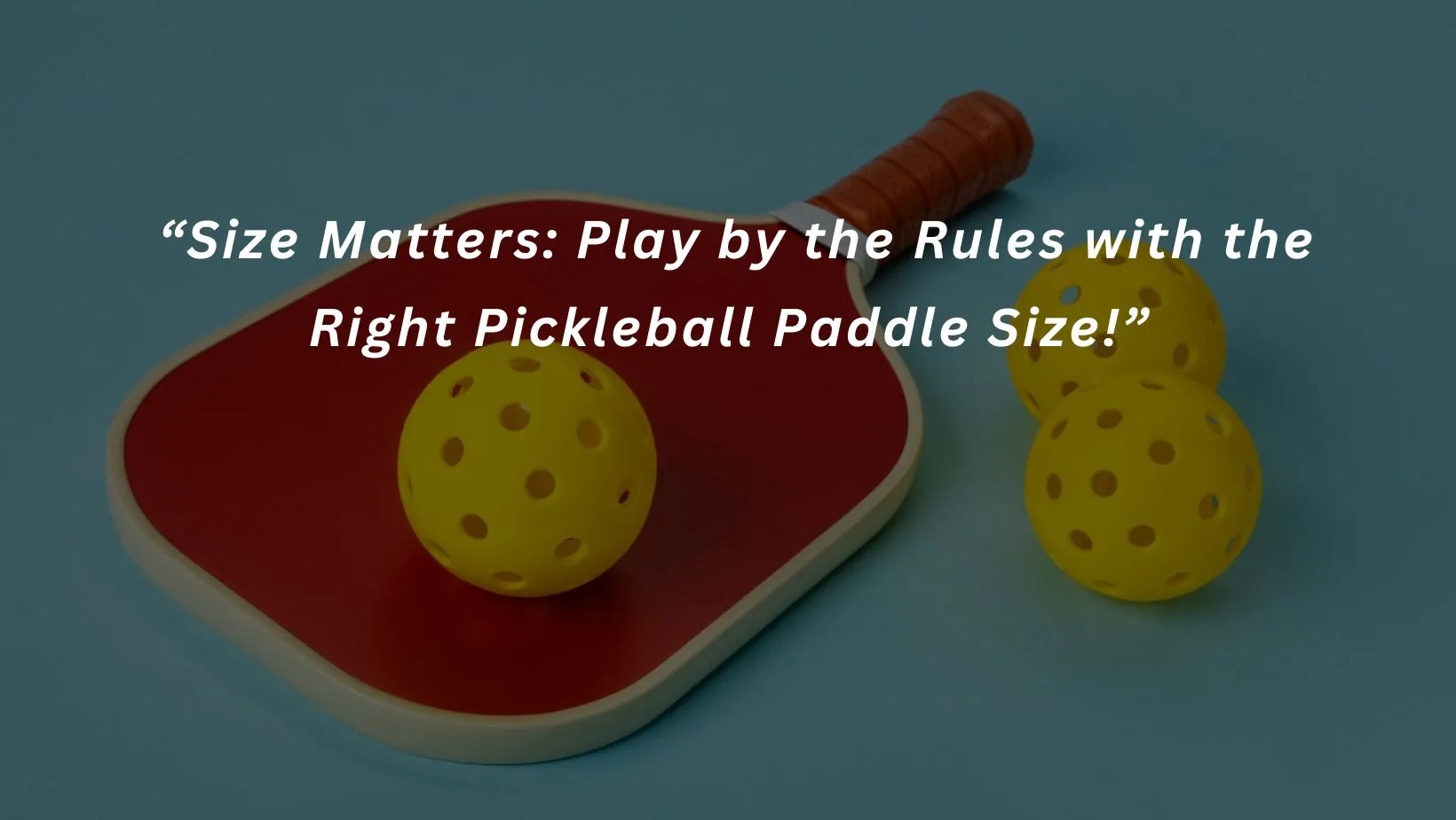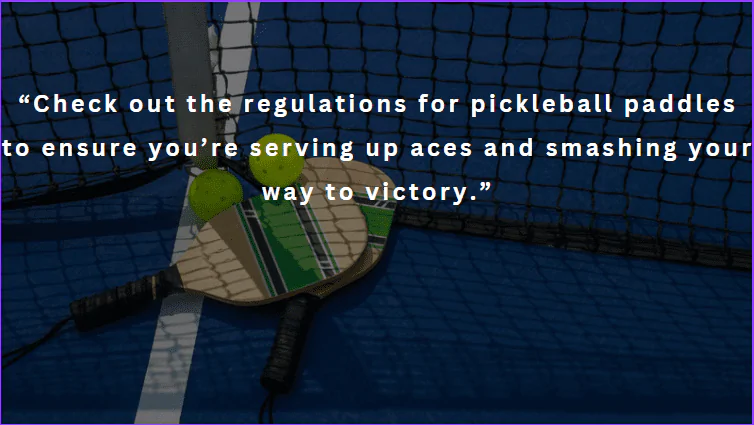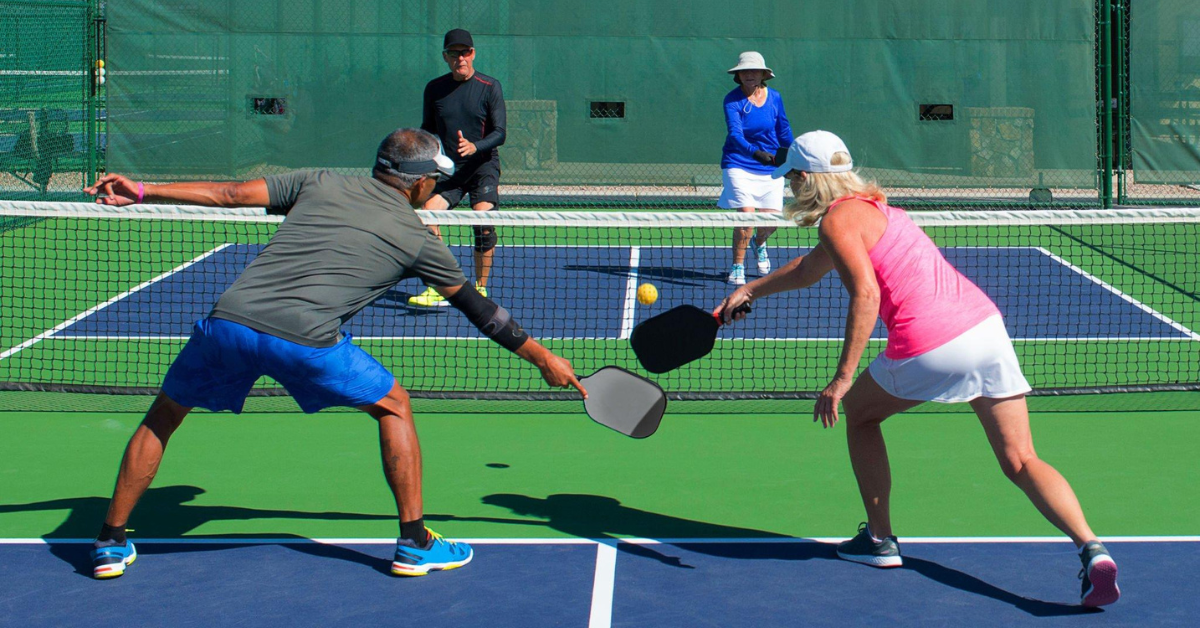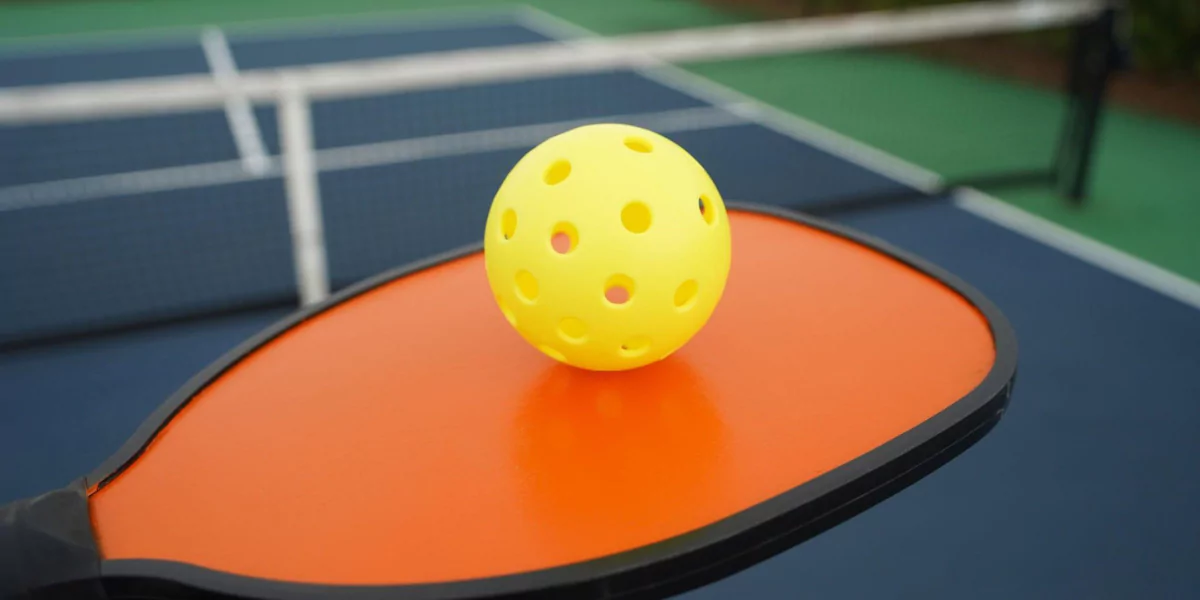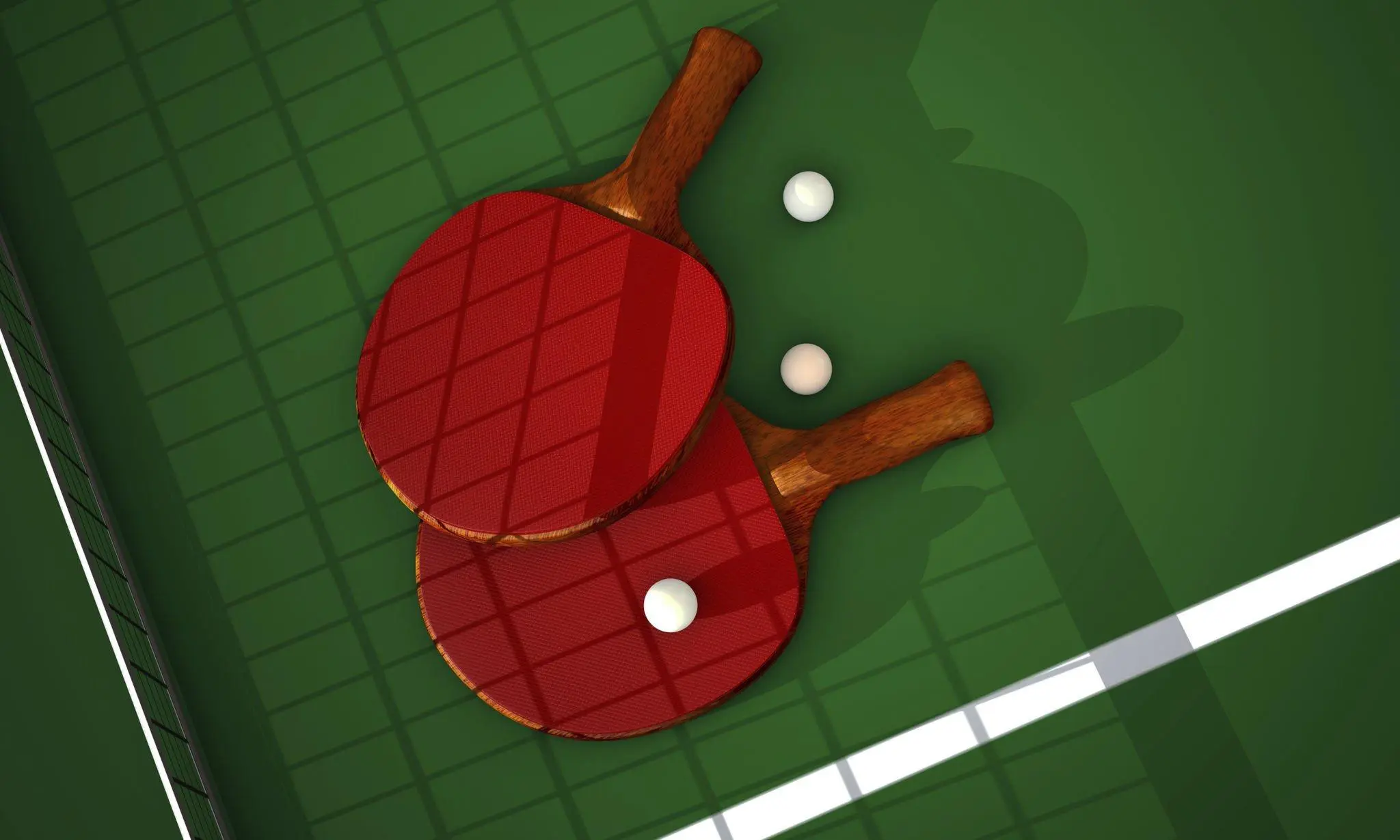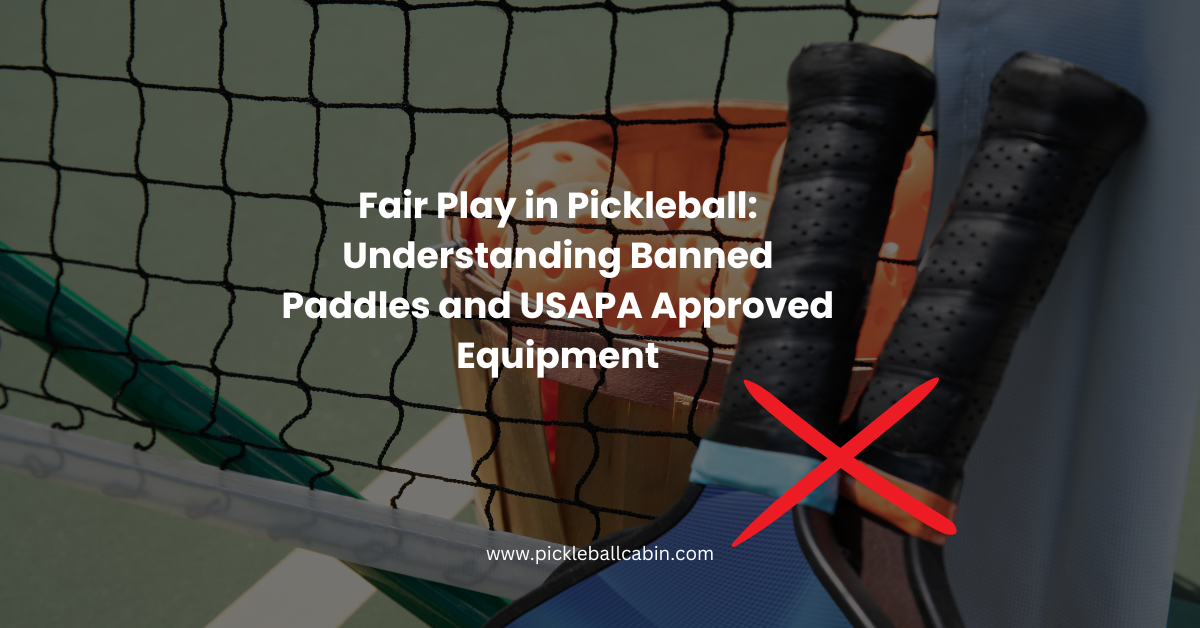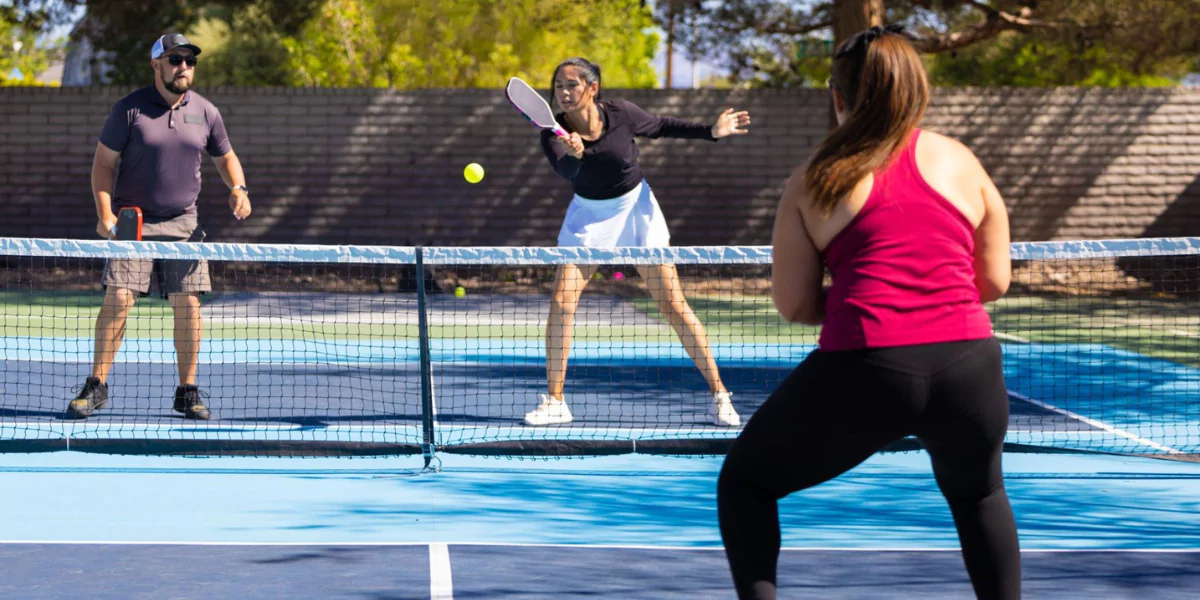Pickleball Defensive Strategies
Pickleball is not just about hitting the ball hard and fast. It also requires strategy, technique, and defense. In this article, we will share with you some pickleball defensive strategies that will help you improve your game and win more points. We will also cover some tips on how to reset points, play offense, and avoid common mistakes.
What is Defense in Pickleball?
Defense in pickleball is the ability to neutralize your opponent’s attacks and prevent them from scoring. Defense can be achieved by using different types of shots, such as blocks, soft shots, drops, lobs, and resets. Defense can also be enhanced by having good positioning, anticipation, footwork, and communication with your partner. Defense is especially important when you are playing against aggressive opponents who like to hit hard and fast, or when you are in a disadvantageous position, such as being at the baseline while your opponents are at the net.
The Importance of Defense in Pickleball
Defense is important in pickleball because it can help you:
- Stay in the rally and avoid losing points
- Create opportunities to transition into offense
- Control the pace and direction of the game
- Frustrate and tire your opponents
- Build confidence and momentum
Why You Should Learn Defensive Strategies
Learning defensive strategies can help you improve your pickleball game because:
- You will be able to handle different types of shots and situations
- You will be able to adapt to different opponents and styles of play
- You will be able to play smarter and more strategically
- You will be able to have more fun and enjoy the game
How to Defend in Pickleball: 11 Essential Tips
Here are some tips on how to defend in pickleball effectively:
Stay Balanced and Ready
One of the key aspects of defense in pickleball is to stay balanced and ready. This means that you should always be in a good stance, with your feet shoulder-width apart, your knees slightly bent, your weight evenly distributed, and your paddle up and in front of you. This will allow you to react quickly and move efficiently to any shot that comes your way. You should also avoid leaning or reaching too far, as this will compromise your balance and make you vulnerable to counterattacks.
Anticipate the Shot
Another important skill for defense in pickleball is to anticipate the shot. This means that you should try to read your opponent’s body language, paddle position, and ball trajectory, and predict where they are going to hit the ball. This will help you prepare your response and move to the right spot. You should also pay attention to the patterns and tendencies of your opponent, such as their favorite shots, their weaknesses, and their habits. This will help you anticipate their moves and plan your strategy accordingly.
Keep Your Paddle Up and in Front
A common mistake that many pickleball players make is to drop their paddle or swing it too much. This can cause them to miss the ball, hit it out of bounds, or hit it too high and give their opponent an easy smash. To avoid this, you should always keep your paddle up and in front of you, with the face of the paddle perpendicular to the ground. This will help you block or deflect any hard shots that come your way, and also allow you to hit soft shots or drops that can reset the point. You should also keep your paddle close to your body, and avoid swinging it too far back or forward, as this will reduce your reaction time and accuracy.
Hang Loose
Another tip for defense in pickleball is to hang loose. This means that you should relax your muscles, especially your arm, wrist, and hand, and avoid tensing up or gripping your paddle too hard. This will help you absorb the impact of the ball and reduce the bounce and speed of your return. It will also help you avoid injuries and fatigue. You should also breathe deeply and calmly, and avoid panicking or rushing your shots.
Don’t Rush the Kitchen
One of the most common goals in pickleball is to get to the kitchen, or the non-volley zone, as soon as possible. This is because being at the net gives you an advantage over your opponent, as you can hit more angles, volleys, and putaways. However, rushing to the kitchen can also be a risky move, especially if you are playing defense. If you run to the net without a good shot, you may expose yourself to a lob, a passing shot, or a smash. Therefore, you should only approach the kitchen when you have a good opportunity, such as a drop shot, a dink, or a weak return from your opponent. Otherwise, you should stay back and defend until you get a better chance.
Footwork
Footwork is another essential element of defense in pickleball. Having good footwork means that you can move quickly and smoothly to any direction, and adjust your position and balance accordingly. Good footwork also helps you generate more power, accuracy, and spin on your shots. To improve your footwork, you should practice different drills, such as side-to-side, forward-and-back, diagonal, and circular movements. You should also use the split step, which is a small hop that you make before your opponent hits the ball. This will help you get ready to move to any direction and react faster.
Communication
Communication is a vital skill for defense in pickleball, especially if you are playing doubles. Communicating with your partner means that you can coordinate your movements, cover the court, and avoid confusion and collisions. You should communicate with your partner verbally and non-verbally, using words, signals, and eye contact. You should also communicate clearly, loudly, and early, and use simple and consistent terms, such as “mine”, “yours”, “switch”, “stay”, “middle”, “line”, etc. Communication can also help you boost your morale, motivate each other, and have fun.
Protect the Middle
One of the most important rules of defense in pickleball is to protect the middle. The middle is the area between you and your partner, or between your body and your paddle. This is the most vulnerable spot on the court, as it is the easiest and most common target for your opponent. To protect the middle, you should always keep your paddle in front of you, and angle it slightly towards the center. You should also position yourself close to your partner, and avoid leaving gaps or holes in the middle. If your opponent hits a shot to the middle, you should call it out and decide who will take it, usually the player with the forehand.
Use the 4th Shot
The 4th shot is a defensive shot that you can use to neutralize your opponent’s 3rd shot, which is usually a drop shot or a drive that they use to approach the net. The 4th shot can be a soft shot, such as a lob, a drop, or a dink, that can force your opponent to back up or hit a high ball. It can also be a hard shot, such as a drive, a passing shot, or a lob, that can catch your opponent off guard or out of position. The 4th shot can help you reset the point, gain control of the rally, and transition into offense.
Adjust Your Grip Pressure and Shot Speed
Another tip for defense in pickleball is to adjust your grip pressure and shot speed according to the situation. Generally, you should use a light grip and a soft shot when you are playing defense, as this will help you absorb the impact of the ball and reduce the bounce and speed of your return. However, you should also be able to switch to a tight grip and a hard shot when you have an opportunity to attack, as this will help you generate more power and pressure on your opponent. You should also be able to vary your shot speed and direction, as this will make you unpredictable and difficult to read.
The Best Defense is a Good Offense
The last tip for defense in pickleball is to remember that the best defense is a good offense. This means that you should not just play passively and wait for your opponent to make a mistake, but also look for opportunities to take charge and put pressure on your opponent. You should also not be afraid to hit aggressive shots, such as volleys, smashes, and putaways, when you have a chance. Playing offense can help you score points, win games, and have more fun.
How to Reset Points in Pickleball
Resetting points in pickleball is a defensive strategy that you can use to neutralize your opponent’s offensive shots and regain control of the rally. Resetting points can be done by using different types of shots, such as blocks, soft shots, drops, lobs, and resets. The goal of resetting points is to make your opponent hit a high ball, a weak ball, or a ball that you can attack.
Understanding the Difference Between Defensive and Resetting Points
Defensive and resetting points are similar, but not the same. Defensive points are points that you play when you are in a disadvantageous position, such as being at the baseline while your opponent is at the net. Defensive points are usually played with a light grip and a soft shot, and the aim is to survive and avoid losing the point. Resetting points are points that you play when you have a chance to change the momentum and direction of the game. Resetting points are usually played with a tight grip and a hard shot, and the aim is to create an opportunity to attack and win the point. For example, a defensive point can be a block or a soft shot that you use to return a smash or a drive from your opponent. A resetting point can be a lob or a drive that you use to push your opponent back or make them hit a high ball that you can volley or smash.
Tips for Resetting Points Effectively
Here are some tips on how to reset points effectively in pickleball:
- Use the right shot for the right situation. Depending on the position, speed, and angle of the ball, you may choose to use a block, a soft shot, a drop, a lob, or a reset to reset the point. For example, if the ball is coming fast and low, you may use a block or a soft shot to absorb the pace and return it softly. If the ball is coming high and slow, you may use a drop, a lob, or a reset to change the direction and height of the ball.
- Aim for the right spot. When resetting points, you should aim for the spot that will give you the most advantage and cause the most trouble for your opponent. For example, if you are using a lob, you should aim for the back corner of the court, where your opponent will have to run the farthest and hit the ball at the lowest point. If you are using a drop, you should aim for the feet of your opponent, where they will have to bend down and hit the ball up. If you are using a reset, you should aim for the middle of the court, where you can create confusion and uncertainty between your opponents.
- Use the right amount of power and spin. When resetting points, you should use the right amount of power and spin to make your shot effective and difficult to return. For example, if you are using a lob, you should use enough power to make the ball go over your opponent’s head, but not too much that it goes out of bounds. You should also use some topspin to make the ball dip faster and bounce higher. If you are using a drop, you should use enough power to make the ball clear the net, but not too much that it bounces too high or too far. You should also use some backspin to make the ball slow down and stay low. If you are using a reset, you should use enough power to make the ball reach the baseline, but not too much that it gives your opponent an easy shot. You should also use some sidespin to make the ball curve and bounce unpredictably.
Bonus Pickleball Strategy Tip
What Position Are You In?
One of the most important questions you should ask yourself when playing pickleball is: what position are you in? This means that you should be aware of your position on the court, your position relative to your partner and your opponents, and your position in the rally. Your position can determine your strategy, your shot selection, and your chances of winning the point. Here are some examples of different positions you can be in, and how they affect your game:
- Advantageous position: This is when you are in a better position than your opponent, such as being at the net while your opponent is at the baseline, or being in the center while your opponent is on the side. In this position, you have more options, angles, and opportunities to attack and score. Your strategy should be to maintain your position, pressure your opponent, and look for putaways.
- Disadvantageous position: This is when you are in a worse position than your opponent, such as being at the baseline while your opponent is at the net, or being on the side while your opponent is in the center. In this position, you have fewer options, angles, and opportunities to attack and score. Your strategy should be to change your position, defend your opponent, and look for resets.
- Neutral position: This is when you are in a similar position as your opponent, such as both being at the net, or both being at the baseline. In this position, you have equal options, angles, and opportunities to attack and score. Your strategy should be to create an advantage, outsmart your opponent, and look for openings.
The Steps to Offense
One of the most common goals in pickleball is to play offense, or to take charge and put pressure on your opponent. However, playing offense is not always easy or possible, especially if you are playing against skilled or aggressive opponents. Therefore, you should follow these steps to play offense effectively:
- Step 1: Get to the net. The first step to playing offense is to get to the net, or the non-volley zone, as soon as possible. This is because being at the net gives you an advantage over your opponent, as you can hit more angles, volleys, and putaways. To get to the net, you should use a good serve, a good return, and a good 3rd shot, which is usually a drop shot or a drive that you use to approach the net.
- Step 2: Control the net. The second step to playing offense is to control the net, or the non-volley zone, as long as possible. This is because controlling the net gives you more control over the rally, as you can dictate the pace and direction of the game. To control the net, you should use good positioning, good footwork, good communication, and good shot selection. You should also avoid hitting the ball too high, too low, too hard, or too soft, as this will give your opponent a chance to attack or reset.
- Step 3: Finish the point. The third step to playing offense is to finish the point, or to score the point. This is because finishing the point gives you more points, more games, and more wins. To finish the point, you should use good timing, good accuracy, good power, and good spin. You should also look for the right opportunity, such as a high ball, a weak ball, or a ball that you can attack. You should also avoid hitting the ball out of bounds, into the net, or into your opponent’s paddle, as this will give your opponent a chance to defend or reset.
Shift Our Thinking
One of the most important things you can do to improve your pickleball game is to shift your thinking. This means that you should change your mindset, attitude, and perspective when playing pickleball. Here are some examples of how you can shift your thinking:
- From negative to positive: Instead of focusing on your mistakes, failures, and weaknesses, you should focus on your successes, strengths, and opportunities. You should also avoid blaming, complaining, and making excuses, and instead take responsibility, learn, and improve. You should also celebrate your achievements, appreciate your progress, and enjoy the game.
- From reactive to proactive: Instead of waiting for your opponent to make a move, you should make the first move. You should also avoid being passive, defensive, and predictable, and instead be active, offensive, and unpredictable. You should also plan your strategy, anticipate your opponent, and execute your shots.
- From fixed to growth: Instead of believing that your skills, abilities, and results are fixed and unchangeable, you should believe that they are flexible and improvable. You should also avoid being complacent, satisfied, and stagnant, and instead be curious, motivated, and dynamic. You should also seek feedback, challenge yourself, and try new things.
Relax
One of the most simple but effective tips you can follow to improve your pickleball game is to relax. This means that you should calm your mind, body, and emotions when playing pickleball. Relaxing can help you:
- Reduce stress, anxiety, and pressure
- Increase focus, concentration, and awareness
- Improve balance, coordination, and agility
- Enhance power, accuracy, and spin
- Prevent injuries and fatigue
- Have more fun and enjoyment
To relax, you should practice different techniques, such as breathing, meditation, visualization, affirmations, and music. You should also have a positive attitude, a supportive partner, and a friendly opponent. You should also remember that pickleball is a game, not a life-or-death situation, and that you are playing for fun, not for money or fame.
Playing Pickleball Defense
Playing pickleball defense is a skill that you should master if you want to win more games and have more fun. Playing pickleball defense means that you can neutralize your opponent’s attacks and prevent them from scoring. Playing pickleball defense also means that you can create opportunities to transition into offense and control the game. Here are some tips on how to play pickleball defense effectively:
Tips for Playing Effective Pickleball Defense
- Stay balanced and ready: One of the key aspects of playing pickleball defense is to stay balanced and ready. This means that you should always be in a good stance, with your feet shoulder-width apart, your knees slightly bent, your weight evenly distributed, and your paddle up and in front of you. This will allow you to react quickly and move efficiently to any shot that comes your way. You should also avoid leaning or reaching too far, as this will compromise your balance and make you vulnerable to counterattacks.
- Anticipate the shot: Another important skill for playing pickleball defense is to anticipate the shot. This means that you should try to read your opponent’s body language, paddle position, and ball trajectory, and predict where they are going to hit the ball. This will help you prepare your response and move to the right spot. You should also pay attention to the patterns and tendencies of your opponent, such as their favorite shots, their weaknesses, and their habits. This will help you anticipate their moves and plan your strategy accordingly.
- Keep your paddle up and in front: A common mistake that many pickleball players make is to drop their paddle or swing it too much. This can cause them to miss the ball , hit it out of bounds, or hit it too high and give their opponent an easy smash. To avoid this, you should always keep your paddle up and in front of you, with the face of the paddle perpendicular to the ground. This will help you block or deflect any hard shots that come your way, and also allow you to hit soft shots or drops that can reset the point. You should also keep your paddle close to your body, and avoid swinging it too far back or forward, as this will reduce your reaction time and accuracy.
- Hang loose: Another tip for playing pickleball defense is to hang loose. This means that you should relax your muscles, especially your arm, wrist, and hand, and avoid tensing up or gripping your paddle too hard. This will help you absorb the impact of the ball and reduce the bounce and speed of your return. It will also help you avoid injuries and fatigue. You should also breathe deeply and calmly, and avoid panicking or rushing your shots.
- Don’t rush the kitchen: One of the most common goals in pickleball is to get to the kitchen, or the non-volley zone, as soon as possible. This is because being at the net gives you an advantage over your opponent, as you can hit more angles, volleys, and putaways. However, rushing to the kitchen can also be a risky move, especially if you are playing defense. If you run to the net without a good shot, you may expose yourself to a lob, a passing shot, or a smash. Therefore, you should only approach the kitchen when you have a good opportunity, such as a drop shot, a dink, or a weak return from your opponent. Otherwise, you should stay back and defend until you get a better chance.
- Footwork: Footwork is another essential element of playing pickleball defense. Having good footwork means that you can move quickly and smoothly to any direction, and adjust your position and balance accordingly. Good footwork also helps you generate more power, accuracy, and spin on your shots. To improve your footwork, you should practice different drills, such as side-to-side, forward-and-back, diagonal, and circular movements. You should also use the split step, which is a small hop that you make before your opponent hits the ball. This will help you get ready to move to any direction and react faster.
- Communication: Communication is a vital skill for playing pickleball defense, especially if you are playing doubles. Communicating with your partner means that you can coordinate your movements, cover the court, and avoid confusion and collisions. You should communicate with your partner verbally and non-verbally, using words, signals, and eye contact. You should also communicate clearly, loudly, and early, and use simple and consistent terms, such as “mine”, “yours”, “switch”, “stay”, “middle”, “line”, etc. Communication can also help you boost your morale, motivate each other, and have fun.
- Protect the middle: One of the most important rules of playing pickleball defense is to protect the middle. The middle is the area between you and your partner, or between your body and your paddle. This is the most vulnerable spot on the court, as it is the easiest and most common target for your opponent. To protect the middle, you should always keep your paddle in front of you, and angle it slightly towards the center. You should also position yourself close to your partner, and avoid leaving gaps or holes in the middle. If your opponent hits a shot to the middle, you should call it out and decide who will take it, usually the player with the forehand.
- Use the 4th shot: The 4th shot is a defensive shot that you can use to neutralize your opponent’s 3rd shot, which is usually a drop shot or a drive that they use to approach the net. The 4th shot can be a soft shot, such as a lob, a drop, or a dink, that can force your opponent to back up or hit a high ball. It can also be a hard shot, such as a drive, a passing shot, or a lob, that can catch your opponent off guard or out of position. The 4th shot can help you reset the point, gain control of the rally, and transition into offense.
- Adjust your grip pressure and shot speed: Another tip for playing pickleball defense is to adjust your grip pressure and shot speed according to the situation. Generally, you should use a light grip and a soft shot when you are playing defense, as this will help you absorb the impact of the ball and reduce the bounce and speed of your return. However, you should also be able to switch to a tight grip and a hard shot when you have an opportunity to attack, as this will help you generate more power and pressure on your opponent. You should also be able to vary your shot speed and direction, as this will make you unpredictable and difficult to read.
- The best defense is a good offense: The last tip for playing pickleball defense is to remember that the best defense is a good offense. This means that you should not just play passively and wait for your opponent to make a mistake, but also look for opportunities to take charge and put pressure on your opponent. You should also not be afraid to hit aggressive shots, such as volleys, smashes, and putaways, when you have a chance. Playing offense can help you score points, win games, and have more fun.
Common Pickleball Defensive Mistakes to Avoid
Here are some common pickleball defensive mistakes that you should avoid:
- Dropping your paddle or swinging it too much
- Leaning or reaching too far
- Tensing up or gripping your paddle too hard
- Panicking or rushing your shots
- Running to the net without a good shot
- Leaving gaps or holes in the middle
- Not communicating with your partner
- Not anticipating your opponent’s shot
- Not using the right shot for the right situation
- Not aiming for the right spot
- Not using the right amount of power and spin
- Not resetting the point when needed
- Not playing offense when possible
Playing Pickleball Offense
Playing pickleball offense is a skill that you should master if you want to win more games and have more fun. Playing pickleball offense means that you can take charge and put pressure on your opponent. Playing pickleball offense also means that you can score points, win games, and control the game. Here are some tips on how to play pickleball offense effectively:
Tips for Playing Effective Pickleball Offense
- Get to the net: The first step to playing pickleball offense is to get to the net, or the non-volley zone, as soon as possible. This is because being at the net gives you an advantage over your opponent, as you can hit more angles, volleys, and putaways. To get to the net, you should use a good serve, a good return, and a good 3rd shot, which is usually a drop shot or a drive that you use to approach the net.
- Control the net: The second step to playing pickleball offense is to control the net, or the non-volley zone, as long as possible. This is because controlling the net gives you more control over the rally, as you can dictate the pace and direction of the game. To control the net, you should use good positioning, good footwork, good communication, and good shot selection. You should also avoid hitting the ball too high, too low, too hard, or too soft, as this will give your opponent a chance to attack or reset.
- Finish the point: The third step to playing pickleball offense is to finish the point, or to score the point. This is because finishing the point gives you more points, more games, and more wins. To finish the point, you should use good timing, good accuracy, good power, and good spin. You should also look for the right opportunity, such as a high ball, a weak ball, or a ball that you can attack. You should also avoid hitting the ball out of bounds, into the net, or into your opponent’s paddle, as this will give your opponent a chance to defend or reset.
Playing Offense When Dinking
Dinking is a soft shot that you hit over the net and into the non-volley zone, usually in a crosscourt direction. Dinking is a common and effective strategy in pickleball, as it can help you get to the net, control the rally, and create openings. However, dinking is not just a defensive or neutral shot, it can also be an offensive shot, if you know how to use it. Here are some tips on how to play offense when dinking:
Tips for Dinking Effectively
- Use the right shot for the right situation. Depending on the position, speed, and angle of the ball, you may choose to use a forehand dink, a backhand dink, a topspin dink, a backspin dink, or a sidespin dink. For example, if the ball is coming low and fast, you may use a forehand or a backhand dink to return it softly. If the ball is coming high and slow, you may use a topspin, a backspin, or a sidespin dink to change the direction and spin of the ball.
- Aim for the right spot. When dinking, you should aim for the spot that will give you the most advantage and cause the most trouble for your opponent. For example, if you are dinking crosscourt, you should aim for the corner of the non-volley zone, where your opponent will have to move the farthest and hit the ball at the lowest point. If you are dinking down the line, you should aim for the sideline of the non-volley zone, where your opponent will have to switch sides and hit the ball at an awkward angle. If you are dinking in the middle, you should aim for the feet of your opponent, where they will have to bend down and hit the ball up.
- Use the right amount of power and spin. When dinking, you should use the right amount of power and spin to make your shot effective and difficult to return. For example, if you are using a topspin dink, you should use enough power to make the ball clear the net, but not too much that it bounces too high or too far. You should also use some topspin to make the ball dip faster and bounce lower. If you are using a backspin dink, you should use enough power to make the ball clear the net, but not too much that it goes out of bounds. You should also use some backspin to make the ball slow down and stay low. If you are using a sidespin dink, you should use enough power to make the ball reach the corner, but not too much that it goes out of bounds. You should also use some sidespin to make the ball curve and bounce unpredictably.
- Vary your shot. When dinking, you should vary your shot to make yourself unpredictable and difficult to read. You should vary your shot by changing the direction, height, speed, and spin of the ball. You should also vary your shot by mixing up your forehand and backhand, your topspin and backspin, and your crosscourt and down the line. You should also vary your shot by hitting some shots hard and some shots soft, some shots deep and some shots short, and some shots straight and some shots angled.
Common Dinking Mistakes to Avoid
Here are some common dinking mistakes that you should avoid:
- Hitting the ball too high, too low, too hard, or too soft
- Hitting the ball out of bounds, into the net, or into your opponent’s paddle
- Hitting the ball to the same spot, same height, same speed, or same spin
- Hitting the ball with the wrong shot, wrong grip, wrong stance, or wrong footwork
- Not communicating with your partner
- Not anticipating your opponent’s shot
- Not using the right shot for the right situation
- Not aiming for the right spot
- Not using the right amount of power and spin
- Not varying your shot
Playing Offense is all About Being Intentional
One of the most important things you can do to improve your pickleball offense is to be intentional. This means that you should have a clear purpose, plan, and goal for every shot that you hit. Being intentional can help you:
- Increase your focus, concentration, and awareness
- Improve your accuracy, consistency, and confidence
- Enhance your power, pressure, and pace
- Prevent errors, mistakes, and faults
- Have more fun and enjoyment
To be intentional, you should practice different techniques, such as visualization, affirmations, and self-talk. You should also have a positive attitude, a supportive partner, and a friendly opponent. You should also remember that pickleball is a game, not a life-or-death situation, and that you are playing for fun, not for money or fame.
